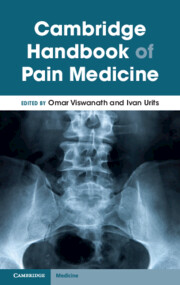Book contents
- Cambridge Handbook of Pain Medicine
- Cambridge Handbook of Pain Medicine
- Copyright page
- Contents
- Contributors
- Pain Handbook Introduction
- Part I Introduction to Pain: Pain Signaling Pathways
- Part II Common Categories of Pharmacologic Medications to Treat Chronic Pain
- Part III Chronic Pain Conditions Head and Neck
- Chapter 11 Post-dural Puncture Headache
- Chapter 12 Migraines
- Chapter 13 Trigeminal Neuralgia
- Chapter 14 Occipital Neuralgia
- Part IV Spine
- Part V Extremities
- Part VI Misc
- Part VII Adjunctive Therapy
- Index
- References
Chapter 12 - Migraines
from Part III - Chronic Pain Conditions Head and Neck
Published online by Cambridge University Press: 01 December 2023
- Cambridge Handbook of Pain Medicine
- Cambridge Handbook of Pain Medicine
- Copyright page
- Contents
- Contributors
- Pain Handbook Introduction
- Part I Introduction to Pain: Pain Signaling Pathways
- Part II Common Categories of Pharmacologic Medications to Treat Chronic Pain
- Part III Chronic Pain Conditions Head and Neck
- Chapter 11 Post-dural Puncture Headache
- Chapter 12 Migraines
- Chapter 13 Trigeminal Neuralgia
- Chapter 14 Occipital Neuralgia
- Part IV Spine
- Part V Extremities
- Part VI Misc
- Part VII Adjunctive Therapy
- Index
- References
Summary
Migraine headache is a highly prevalent and disabling neurological primary headache disorder. It is characterized by disabling, throbbing, episodic, unilateral headaches associated with neurologic features such as photophobia, phonophobia, or autonomic symptoms like nausea and vomiting lasting 4 to 72 hours at a time. Patients will often avoid bright lights or loud noises. About 30% of migraine patients experience auras which are unilateral focal neurological disturbances prior the headache onset, often manifested as visual, sensory, or motor symptoms. Pathophysiology of migraine headache is still unclear and is being studied; however, calcitonin gene-related peptide (CGRP) is believed to play a major and important role, and therefore has become a primary therapeutic target. This was supported by the finding of CGRP release during acute migraine attacks and then subsequent normalization of CGRP levels after efficacious sumatriptan treatment. These findings have been a focal point in recent pharmacological developments in managing migraine headaches.
- Type
- Chapter
- Information
- Cambridge Handbook of Pain Medicine , pp. 75 - 80Publisher: Cambridge University PressPrint publication year: 2023



